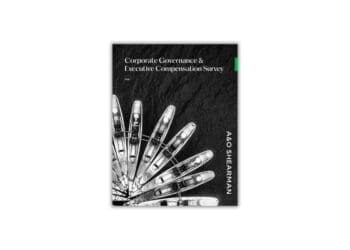FiscalDoctor CEO and President Gary Patterson discusses takeaways from the latest NACD Public Company Governance Survey – guidance pertinent for small and mid-sized businesses (SMBs) and large organizations alike.
Small and medium-sized businesses (SMB) must often live with the reality of scarce resources: limited time, insufficient money for open CAPEX needs and inadequate access to key expertise. Here, I address the challenges faced by family businesses, private businesses and smaller public organizations and describe how these smaller organizations can leverage the 2018–2019 NACD National Association of Corporate Directors) Public Company Governance Survey of top risk, updated from the NACD 2019 Global Board Leaders’ Summit. (While targeted to SMB, the information provided will benefit larger organizations, too.)
Into the Future: Foreseeable Changes and Consequences
Unlike their larger counterparts, many small (up to $50 million in annual revenue) and medium-sized (up to $1 billion in annual revenue) businesses (SMB) don’t have the luxury or the duty to invest seemingly unlimited amounts in governance, compliance, economic surveys and enterprise risk management.
That’s why I attended the NACD (National Association of Corporate Directors) 2019 Global Board Leaders’ Summit with the goal of finding value for smaller organizations — including major business trends, ways to improve board performance and action steps to make your board an even better strategic asset. I’ve summarized this information for middle-market businesses and others at an early or middle stage of the seemingly never-ending climb created by greater risk plus higher compliance and governance mountains.
Here’s an overview of speaker presentations and attendee follow-up discussions at the 2019 NACD Summit, which point to three key challenges in the future:
- As part of what is still a new normal, the need to be more agile and dynamic was a common theme in Summit discussions. Historically, the U.S. has weathered turbulent times better than most other countries and economies, but it’s important to be prepared to respond with increased flexibility. Consider that future turbulence may result from disruptive geopolitics or an economic downturn. Most leaders are projecting a near-term period of meaningful risk.
- Cyber is not going away as a major risk issue. In fact, the risks may increase with more sophisticated actors and potential enemy-government sponsorship. Consider digging a little deeper into the 2018–2019 NACD Public Company Governance Survey’s detailed follow-ups, especially for cyber – noted below.
- Leaders will have to continually scan the horizon for new opportunities, additional revenue sources and improved efficiencies. A subsequent NACD survey found that “82 percent expect much deeper board engagement on entirely new drivers of growth and risk.”
You may benefit from a second review of the 2018–2019 NACD Survey specifically to see where your business can take better advantage of the experience, skills and strategic focus of its board of directors. For example, a back-to-the-future trend suggested at the conference involved food and agriculture, particularly organic or a newer version of organic, often called restorative agriculture. Think of this as a movement to reduce the amount of fertilizer and pesticides while restoring the quality of the soil producing our food. This allows all parties in the farming process to benefit: farmers have better economics, producers get a more reliable and dependable supply and consumers get healthier food.
Using the 2018–2019 NACD Public Company Governance Survey
Here are some tips for using the survey results and supporting information to benefit your organization:
- Review the survey’s ranked list of top concerns and opportunities for the next year, and compare it to your current list of top opportunities and risks. Make any necessary adjustments for your organization’s unique situation and needs.
- Do a deep dive on the summaries and series of appendixes, which can be used like off-the-shelf templates to be customized for your business.
- Make sure this information validates your strategic plan, budget and enterprise risk management framework.
To do this, start with a sanity check of your strategic plan. What are the top five trends you foresee having the greatest effect on your company over the next 12 months, and how does your list compare to the study’s top 10?
Next, estimate the likelihood that the main disruptors listed in the survey will affect your company or industry:
- Changes in the regulatory climate
- Economic slowdown
- Cybersecurity threats
- Business model disruptions
- Geopolitical volatility
- Pace of technology disruption
- Key talent deficits
- Increased industry consolidation
- Supply chain disruptions
- Changes in consumer spending/behaviors; investor activism
- Shifting workforce demographics
Then, make a deeper dive into your detailed list of opportunities, evaluate how well your organization is handling these possibilities and determine the next steps.
Probably the main cost-saving gem for many readers of this report is the appendix, which details the methodology (for you to appreciate) and the main group findings while also providing a full set of responses.
Think of this report as a preliminary and draft survey prepared by an external consultant, which allows you to compare your existing risk management policy and profile to the results of an expansive survey that would be expensive for you to create on your own.
Consider how you can adapt the suggestions for your own unique situation, size and resources. By doing so, you will increase your organization’s ability to survive and thrive in an ever-changing and more challenging environment.
To get further information, including how to find opportunities for new growth and less risk for your organization, you can access the National Association of Corporate Directors’ executive summary and blog overview here.



 Gary W. Patterson, president & CEO of
Gary W. Patterson, president & CEO of 









